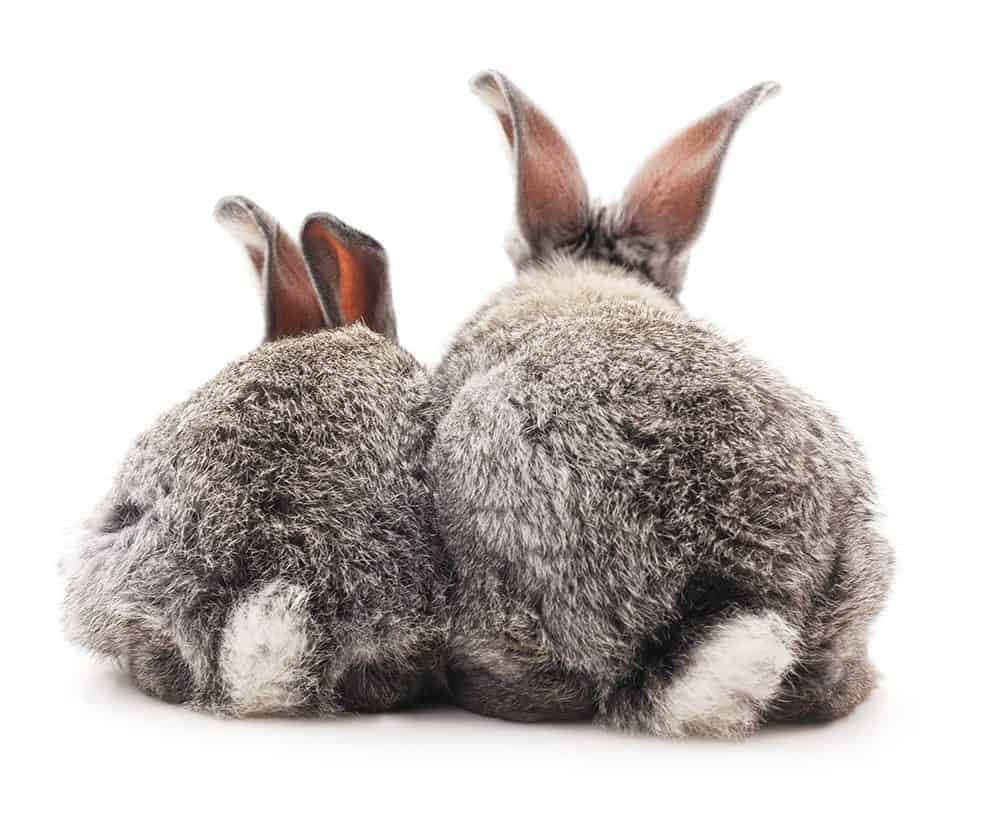
Rabbits are highly social creatures who, in the wild, live in large groups or colonies in underground tunnels, known as warrens. Their social groups are territorial and complex, with a dominance hierarchy – a trait that remains deeply embedded in pet rabbits. This is why introductions need to be made slowly and carefully.
To help forge a happy rabbit relationship you’ll need to provide side-by-side accommodation, a neutral area for them to begin to interact, and learn to identify the signs of positive and negative behaviours. The best pairing is a neutered and vaccinated male and female rabbit – although you need to wait at least four to six weeks after neutering before you make the introductions.
DID YOU KNOW?
You should never keep rabbits with guinea pigs as they have very different needs.
Rabbits can also carry diseases which can be very harmful to guinea pigs.
Every rabbit is an individual and each pairing is different – some bondings will happen fairly easily, taking around a month, while others are more challenging and will take much longer. It is well worth the effort, however, as a solo bunny can never be truly happy and, once a pair of rabbits become pals, watching them play and groom together is an extremely rewarding experience.
5 steps to successful bunny bonding
1. SIDE-BY-SIDE Begin by preparing some side-by-side accommodation. This is so they can get used to the sight, sound and scent of each other, while still feeling safe in their own space. Each rabbit must also be able to hide away from the other whenever they want to, so make sure they both have hiding places to escape to.
2. SCENT EXCHANGE It’s normal for there to be some unrest in the beginning, but to help things along, try swapping some of the rabbits’ nesting materials over, or rubbing a soft cloth over one bunny and then the other to transfer scent.
3. NOSE TO NOSE Once they seem to be comfortable in each other’s presence, you can try introducing them to each other, twitchy nose to twitchy nose. It’s essential that they are introduced in a neutral area that neither rabbit has spent time in so there are no traces of scenting by either bunny. An existing rabbit scent profile would indicate that one has claimed the territory as their own, leading to a fight. They will also need careful supervision. Some negative behaviours are normal as they get to know each other, but if they begin growling, chasing and mounting each other or show persistent aggression, they must be separated immediately to avoid injury.
DID YOU KNOW?
The RSPCA recommends always speaking to your vet for more
detailed advice before attempting to bond rabbits.
4. BECOMING FRIENDS If things are going well, gradually increase the time they’re together each day, while continuing to supervise them. Positive behaviours to look for include sitting or lying side by side, even when the barrier is in between them, grooming each other and seeking each other out for friendly interactions. You can then begin to introduce toys, tunnels and hiding places – although make sure there are enough for both rabbits so squabbles don’t break out.
5. A HAPPY HOME Once the rabbits are spending one to two hours together daily without any problems they can be introduced into their intended living space – which should be as big as possible, with constant indoor and outdoor access, a range of platforms, tunnels and hiding places – initially under supervision. Once they’re regularly showing positive behaviours towards each other they can be left alone together safely to enjoy hours of happy bunny time.
FIND OUT MORE about creating the perfect environment for your rabbits here
FIND MORE ADVICE on caring for your rabbits here
Children and rabbits: Traditionally thought of as good pets for children, rabbits are not easy to look after correctly. Small animals are often more complex to feed and care for than a cat or dog, and require more looking after than a child can offer. So, while it’s lovely for children to enjoy the company of rabbits, the responsibility for any animal’s wellbeing lies with adults, who must always be responsible for overseeing their care.
Sources: rspca.org.uk, rabbitwelfare.co.uk, pdsa.org.uk, bluecross.org.uk, pets4homes.co.uk














